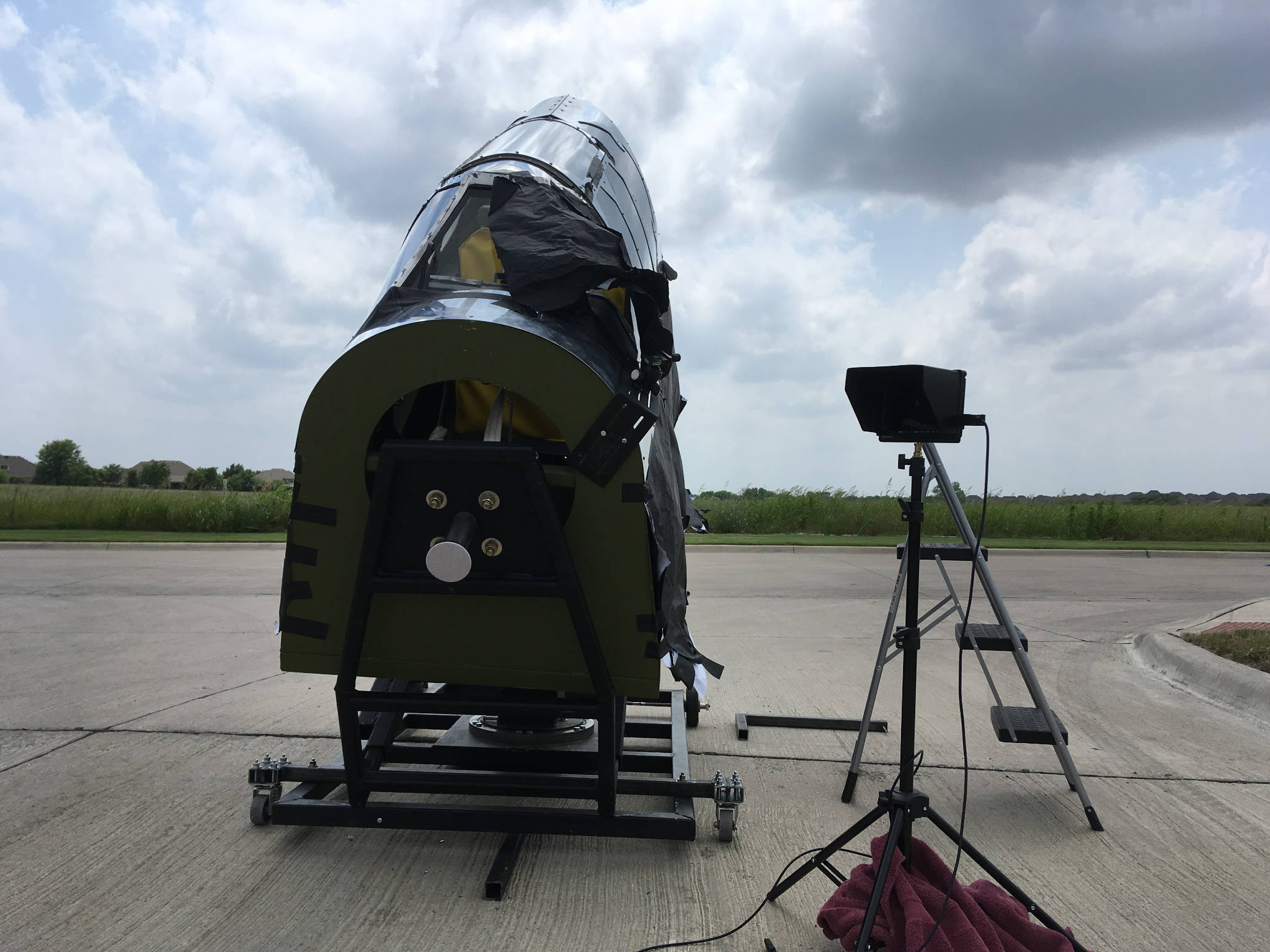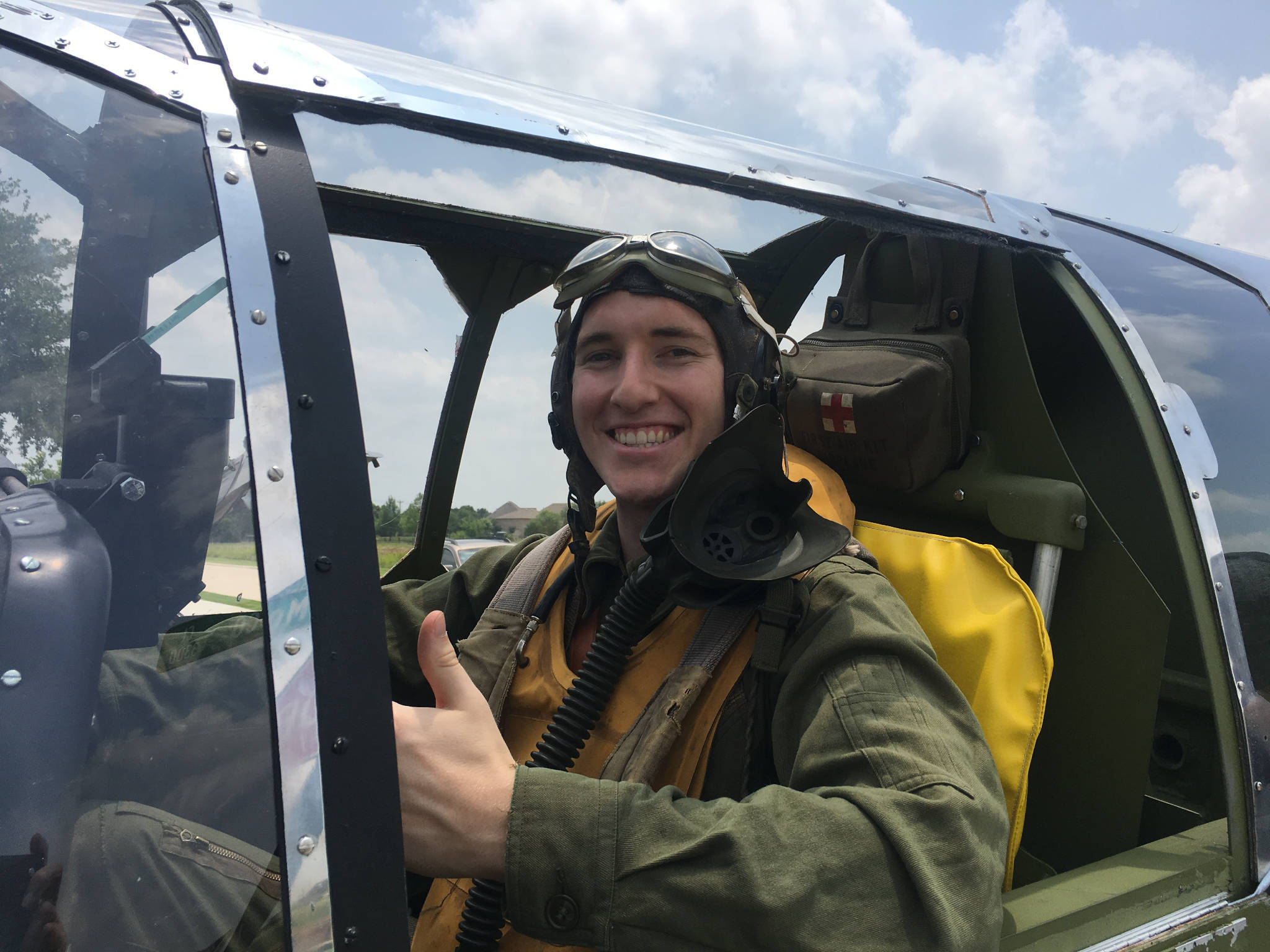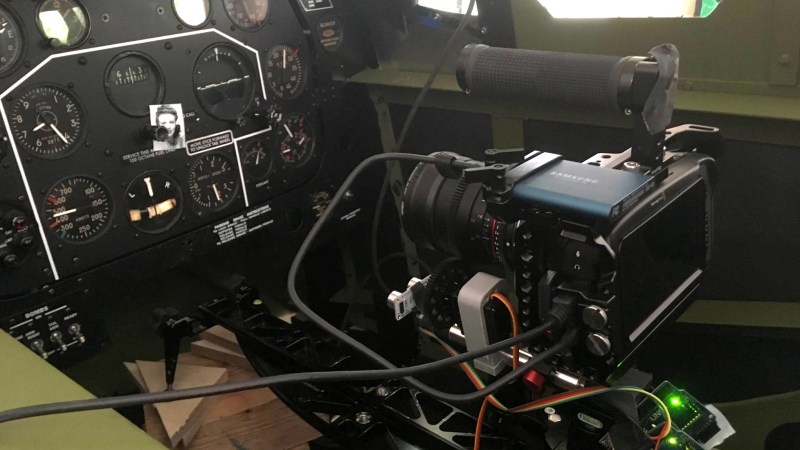It’s surprisingly easy to misjudge tips that come into the Hackaday tip line. After filtering out the omnipresent spam, a quick scan of tip titles will often form a quick impression that turns out to be completely wrong. Such was the case with a recent tip that seemed from the subject line to be a flight simulator cockpit. The mental picture I had was of a model cockpit hooked to Flight Simulator or some other off-the-shelf flying game, many of which we’ve seen over the years.
I couldn’t have been more wrong about the project that Grant Hobbs undertook. His cockpit simulator turned out to be so much more than what I thought, and after trading a few emails with him to get all the details, I felt like I had to share the series of hacks that led to the short video below and the story about how he somehow managed to build the set despite having no previous experience with the usual tools of the trade.
A Novel and a Film
Grant has been making short films for a while, mainly in collaboration with John Dwyer, an author of historical novels. Grant’s shorts are used as promos for John’s books, and nicely capture the period and settings of John’s novels. Most of these films required little in the way of special sets, relying instead on stock footage and vintage costumes to achieve their look and feel. John’s latest novel would change all that.
Called Mustang, the novel centers on a hotshot fighter pilot in WWII. Grant’s vision for the short to promote the book was inspired by the recent Christopher Nolan film Dunkirk, which featured intricate sequences filmed in the cockpit of a Spitfire. Grant wanted a similar look, and began arranging to use a real P-51 Mustang for filming. That presented immediate problems. First, there aren’t that many of the vintage aircraft left, and those that are still flying usually have anachronistic instruments in the cockpit, like GPS. Also, Grant wanted the instruments to respond as if the plane were airborne, and to have the shadows cast by the canopy into the cockpit suggest aerial maneuvers. Such an effect would be difficult to achieve with a plane stuck on a runway.
That’s when Grant realized that a gimballed cockpit simulator was needed. It could have a period-accurate dashboard, be positioned outdoors to take advantage of natural daylight and real backgrounds rather than CGI, and could be pitched, rolled and yawed to simulate flight. It would be perfect, and it would save the project. There was just one problem: he had no idea how to build it.
Helping Hands
Wisely, Grant turned to his local hackerspace, Dallas Maker Space, for help. There he found not only the tools he lacked, but kindred spirits with the necessary skills and the willingness to share them. They started working on the cockpit instrument panel, which ended up including a combination of actual flight hardware and mocked-up instruments. The fake instruments used steppers and an Arduino to drive the needles, which were controlled by a custom iPad app that was used to animate them live during filming. The real instruments, like the artificial horizon and turn-and-slip indicator, were powered by a vacuum pump and responded to the movements of the simulator on its gimbals.

Mounting this convincing panel into something was an entirely different undertaking. Grant relied heavily on the experience of DMS members to design a structure strong enough to support the actor and allow for the motion needed to create a convincing effect. The cockpit mockup, made from plasma-cut sheet metal and plywood, is mounted to a heavy-duty three-axis gimbal, including a massive bearing from a pallet jack for the yaw axis.

Grant had originally planned to place the mockup on a mountaintop for shooting, much as the Spitfire mockup from Dunkirk was placed on the edge of a cliff to give an unobstructed horizon to simulate flying over the English Channel. When that proved logistically challenging, he set up on an airport runway and used clever camera blocking to avoid shooting the horizon. Grips manually moved the simulator while Grant manipulated the fake instruments and filmed the results, which I think speak for themselves. If only the budget – and on-set safety – would have supported simulating the massive four-blade Mustang propeller, the illusion would have been complete.
I really enjoyed digging into this project and all the hacks that it entailed. Movie magic is as much about hacking as anything else, at least behind the cameras, and it’s good to see what’s possible with a limited budget. We recently featured a low-budget but high-style sci-fi movie set build, and we’ve gone in-depth with a playback designer for the Netflix series Lost in Space, both in these pages and as a Hack Chat.


















Cool project! Interesting to read how some problems are solved. Thanks for posting.
When I realized what he was doing, I thought how expensive and complicated it would be to motorize the platform, it never occurred to me to just have stage hands move the thing around. Reprogramming is much easier too; “Dan! Down on the back more during that banking turn!!!”
Awesome project.
And the Key Grip is the stage hand who locks up the equipment at night? (Because they have the key)
nice!
All that work for such a short promo. I am impressed! I can’t think of a better way to get the same result though.
Super result. Very realistic. The eerie music adds to the scene
Wow. That’s a great clip. Job well done.
This wasn’t supposed to be a reply to radiusmike, though I do echo his sentiment.
This seems to happen sometimes; is it related to posting a comment after canceling a mistaken reply? When scrolling through the comments on my phone, it’s almost impossible not to hit the “reply” or “report comment” links by mistake. I’m sure I didn’t type my comment into a reply to radiusmike, though.
Wonder what radio station would be playing music in the 195-400kc range, which is what that BC-1206 covers IIRC.
Good question! I wanted the setup of the scene to at least be plausible, so I reached out to the BBC early on in the project to ask about radio frequencies in use at the time. They confirmed that they would have been broadcasting on 200 kHz—a frequency that had been allocated to the UK since the 20s. It’s a bit hard to read, but the closeup of the radio actually shows it being tuned to around 200 kHz, matching the BBC frequency.
Thanks, Grant! I learned something today! I went down the rabbit hole a bit and read about the history of the Droitwich transmitting station ( https://en.wikipedia.org/wiki/BBC_Light_Programme ). There are also some interesting photos put out there by bbceng.info of its early years. I sure do appreciate a video that tries for authenticity–I’ve seen so many control panels made out of tube testers, and transmitters made out of radio receivers… I have a unit just like yours that I purchased decades ago. I am loath to even put an iron to it, as each and every capacitor is original and it has no modification holes. The only tube receiver I have where the plate and filament voltage is the same–28 volts.
BC-1206s were used to listen to the towers at airfields. They were mostly temporary installations, used once when the aircraft were being ferried to their initial airfields, then removed when the better MF receivers were installed (BC-453s for AAF aircraft – the classic “ARC-5 Command Set”).
Any chance of open-sourcing the designs? It looks like it would make a great flight-sim cockpit :)
Hopefully the cockpit won’t be scrapped or left in a dusty warehouse to rot.
But, if I were offer Grant a place to keep it, my wife would have a second opinion, and I’d end up living in a van down by the river. B^)
I’ve thought about it! It would be great to kick-start a set of plans that would evolve and improve with each build. One challenge would be sharing them in such a way that contributions would be easy to assimilate—especially since there are so many different kinds of parts and probably only a handful of interested builders. Any suggestions?
Just putting the design files in a public github repository is a good start. It probably won’t work so well to track changes (depending on the file format of your design files) but at least they are available. Other can fork the repo if they want, and as you say, there’s probably only going to be a couple people building it, so if someone is starting a build they can check out a few others if they want. I wouldn’t worry to much about it.
There is a thriving community of cockpit builders at https://forums.eagle.ru/forumdisplay.php?f=101 who use Digital Combat Simulator (DCS) as the core software for their creations. DCS has a very accurate P51 simulation and the software allows porting of data to drive instruments and accept switch inputs. I built an almost complete A-10C Warthog cockpit using arduino and open source DCS-BIOS to run instruments and indicators
I’m working on a indie feature film that calls for extensive use of a P51 Mustang cockpit – I’d love to see if there is a way to get plans for what you created – looks great!
Beautiful work, on both the simulator and the filmmaking. The trailer is every bit as enticing as what comes out of Hollywood – perhaps moreso since it’s not overloaded with CGI (which I despise).
“A Novel and a Film”
And it’s a novel film as well!
B^)
“Granted wanted a similar look, ” (Paragraph 4)
Granted, Grant wanted a similar look. ?
B^)
Such an awesome project, glad we got to see more of the behind the scenes of how it was built. I suppose the advertisement worked as well, because now I want to read the book.